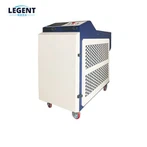Stainless steel materials have excellent corrosion resistance, wear resistance, toughness, craftsmanship, non-toxicity and clean decorative properties, and have been widely used in building materials, kitchenware, bathrooms, automobiles, decoration, arts and crafts and other fields. Stainless steel products have become indispensable tools or materials in people's daily life. With the continuous improvement of people's living standards, people's pursuit of products is not only limited to its functions, but also to the added value of products' appearance, artistic temperament, etc. more and more demands have been put forward.
Because the natural color of stainless steel is silvery white, it gives people a sense of monotony and indifference. Inspired by pattern decoration, people began to pursue different colors on stainless steel, giving people a warm and soft feeling, and improving its added value. Stainless steel not only maintains all its original characteristics, but also the chemical corrosion resistance, aging resistance and many other properties of the colored stainless steel have been significantly improved compared with the original ones. pursuit.
Composition and performance parameters of 304 stainless steel
304 stainless steel is the most commonly used material in our daily life, as shown in Figure 1 and Figure 2, the main components and physical parameters of 304 stainless steel:
Figure 1 Component content of 304 stainless steel

Figure 2 Basic physical parameters of 304 stainless steel
![]()
Coloring process of stainless steel
According to the coloring technology widely used in stainless steel, stainless steel coloring can be roughly divided into three categories: chemical coloring method, electrochemical coloring method, and laser marking method. The first two categories are traditional coloring techniques. This article mainly introduces the MOPA laser pulse marking method. Principles and Applications. As shown in Figure 3, the classification of stainless steel coloring technology:
Figure 3 Classification of stainless steel coloring technology
In chemical and electrochemical coloring methods, due to the large use of chemical reagents, the proportion configuration of the oxidizing liquid in the coloring process is very strict, the oxidation process is not easy to control, and irritating or toxic gases are inevitably generated. The strengthening of environmental protection policies and the enhancement of people's awareness of environmental protection have resulted in the inability of these two types of traditional stainless steel coloring technologies to be widely promoted.
The principle of MOPA laser stainless steel coloring
Stainless steel coloring principle: Under the action of laser heat, the surface of stainless steel produces colored oxides or a layer of colorless and transparent oxide film, which presents various colors due to the thin film interference effect of light. The color effect produced by stainless steel is mainly due to the interference effect of the film.

Figure 4 The principle of thin film interference
The pulsed laser beam acts on the surface of the stainless steel, and a layer (several hundred nanometers) of translucent oxide film is formed on the metal surface. Reflected light, another part of the light is refracted into the translucent oxide layer and then refracted into the air to form refracted light, which interferes with the original reflected light. Due to this interference phenomenon of light, some wavelengths of light are strengthened, and some wavelengths of light are cancelled , to form different color effects under the synthesis.
Advantages of MOPA Laser Stainless Steel Coloring
Compared with traditional coloring methods, MOPA laser coloring has many advantages:
1. Non-contact processing, no consumables, no need to remove materials, not easy to wipe, high security;
2. No chemical coloring, environmental protection and pollution-free, avoiding the production of toxic and harmful substances;
3. The process is simple, the operation is simple, the added value of the product is high, and the pattern and text of any color can be marked.









